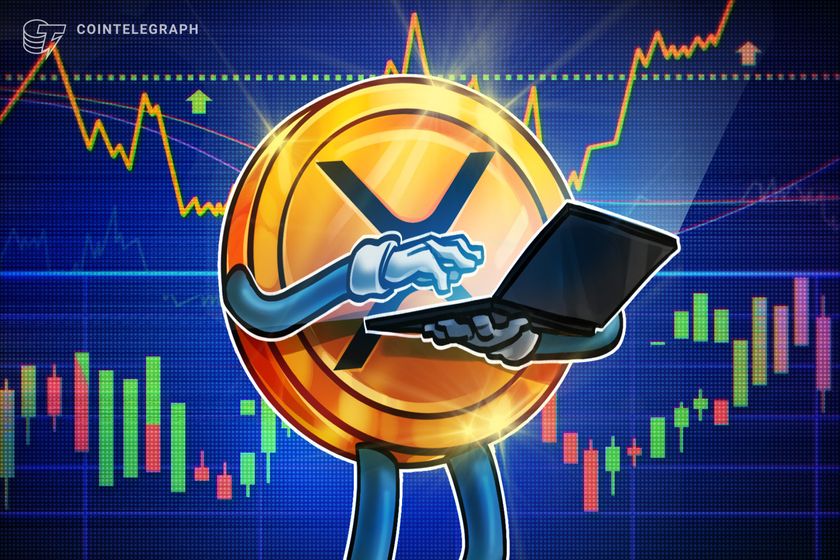First things first, let’s clarify what we mean by “altcoins.” Simply put, altcoins are any cryptocurrencies other than Bitcoin. This includes Ethereum (ETH), but also many others that have emerged recently like EarthMeta. Altcoins can serve a variety of purposes, from powering decentralized applications to enabling faster transactions to utility tokens for platforms.
So, what makes altcoins particularly attractive? There are several reasons. Many altcoins are still in their infancy regarding market capitalization. This means they have a lot of room to grow. While Bitcoin has already reached a substantial market cap, many altcoins are just starting to gain traction. For instance, consider a hypothetical scenario where an altcoin is valued at $1. If it captures just a fraction of Bitcoin’s market cap, the potential for returns could be astronomical. Altcoins often serve unique purposes. Some may focus on privacy, while others might enable smart contracts or facilitate faster transactions. This diversity means there’s likely an altcoin that aligns with an investor’s interests or values. For example, cryptocurrencies designed for sustainable energy solutions are gaining attention from socially conscious users.
Altcoins are often at the forefront of technological innovation. Many projects are actively developing new technologies or improving existing ones, making them appealing to users who want to support the next wave of advancements in the crypto space. – The success of many altcoins hinges on strong communities. Engaged communities can drive interest, foster development, and create a sense of loyalty that often leads to price appreciation. Projects that can build a solid community have a better chance of sustaining growth.
To understand the potential of buying altcoins, it’s essential to look at some key market numbers. As of now, the total cryptocurrency market cap is sitting at approximately $2 trillion. Bitcoin, while dominant, accounts for around 40-50% of this total. This leaves plenty of room for altcoins to capture a larger share. In recent years, several altcoins have demonstrated their ability to produce staggering returns. For example, Ethereum has increased by over 10,000% since its inception. Other altcoins have also exhibited similar growth trajectories, particularly during bullish market conditions.
Historically, altcoins tend to outperform Bitcoin during bull markets, offering users the chance for substantial gains. This trend can create a ripple effect, as excitement builds and more users flock to the altcoin market. – Crypto whales—those who hold significant amounts of cryptocurrency—are already positioning themselves strategically to capitalize on the upcoming market dynamics. By buying up promising altcoins, they can create upward pressure on prices, benefiting from the increased demand.
While the potential for high returns is enticing, it’s important to acknowledge the risks involved. The reality is that not every altcoin will deliver on its promises. The crypto market is notorious for its volatility, and prices can swing dramatically. One day, an altcoin might soar, while the next day, it could crash. – Additionally, some altcoins may lack the fundamentals needed for long-term sustainability. The excitement surrounding a new project can sometimes overshadow its underlying value, leading to price corrections when reality sets in.
Investigate the team behind the project. Do they have a track record of success in the crypto space? Are they transparent about their goals and progress? A strong team can significantly influence a project’s success. Understand the problem the altcoin aims to solve. Is there genuine demand for its use case? Projects with clear, practical applications are more likely to attract users and users.
Engage with the project’s community. Active and passionate communities can provide valuable insights and support for the project. Look for discussions on forums, social media, and other platforms. Examine the altcoin’s supply and distribution model. How many tokens are in circulation, and what is the total supply? A well-designed tokenomics model can create scarcity and drive demand.
Best Altcoin to Invest in for 2025-2026 : 1. EarthMetaEarthMeta is an innovative virtual real estate platform that allows users to buy, sell, and trade cities as NFTs. When users purchase a city, they become its Governor, gaining control over assets like monuments and buildings while earning a 1% transaction fee on every sale within their city.
The platform offers users powerful tools, including Augmented Reality (AR), enabling Governors to create experiences within their cities. With its decentralized marketplace, users can engage in digital real estate, with the flexibility and transparency of blockchain technology.
During the presale, early participants to that metaverse crypto receive a 3% bonus on token purchases, enjoy 86% APY on staking rewards, and can claim free cities. Since the platform is set to launch in one week, cities are expected to be highly sought after and will likely sell out quickly.
Additionally, EarthMeta limits the number of cities available, creating scarcity and driving long-term value. Users also have a voice in platform governance through its DAO, ensuring a community-driven approach. Governors can further benefit by participating in staking, where their assets generate returns through city transactions.
With its focus on customization, AR integration, and a scarcity-driven marketplace, EarthMeta offers a new dimension to digital ownership, providing users the chance to build, monetize, and engage in the growing world of virtual real estate.
2. ToncoinToncoin (Crypto Presale) is a utility token for The Open Network (TON), a highly scalable blockchain that supports a variety of decentralized applications and services. TON is known for its unique multi-blockchain architecture, enabling millions of transactions per second through sharding and Turing-complete smart contracts. This token powers payment channels, supports micropayments, and enables storage and proxy services within the ecosystem. With its flexible framework, the project integrates a distributed file storage system, offering torrent-like access to user data.
Toncoin is central to the platform’s internal services, supporting smart contracts, distributed services, and off-chain transactions. By integrating peer-to-peer networks, Toncoin can streamline payments, provide decentralized hosting, and enable fast cross-chain transactions using Instant Hypercube Routing. These features make Toncoin ideal for decentralized applications.
Another core benefit is the potential of earning rewards through staking, where users can lock tokens for rewards, and through payment channels, where transactions can be settled off-chain at a lower cost. With its wide-reaching service applications, Toncoin provides users with flexibility and innovation.
3. FilecoinFilecoin is a decentralized storage network that allows users to rent out extra storage space or store their data securely across a distributed system. Unlike traditional cloud services, Filecoin utilizes blockchain technology to create a decentralized marketplace for data storage, where users can store, retrieve, and manage data through a global network of participants.
The Filecoin ecosystem operates with its own cryptocurrency, FIL, which is used to pay for storage services, reward participants who provide storage, and ensure the network’s functionality. Users with extra storage space can participate by renting it out, earning FIL in return.
One of the standout features of Filecoin is its ability to reduce the cost of data storage by using unused resources globally. This system offers an efficient, flexible solution for individuals and organizations needing data storage, providing them with greater control over where and how their data is stored.
Filecoin supports a variety of use cases, including data archiving, sharing, and even content delivery. Its decentralized approach ensures that no single entity controls the network, making it an appealing alternative to traditional cloud providers. As the demand for decentralized storage grows, Filecoin continues to evolve, offering more scalable and user-friendly solutions for storing large amounts of data.
4. ChainlinkChainlink is a decentralized oracle network designed to facilitate the interaction between blockchain-based smart contracts and off-chain data. The network enables smart contracts to securely access real-world data such as financial information, events, and even other blockchains, which are crucial for running decentralized applications (DApps).
The network operates through oracles, which are responsible for retrieving and verifying data from off-chain sources. These oracles work together to create decentralized oracle networks (DONs), ensuring the accuracy and reliability of the data delivered to smart contracts. Chainlink is built to provide a seamless connection between blockchains and external systems, allowing for a wide range of applications, including finance, supply chain, and gaming.
Unlike centralized alternatives, Chainlink’s decentralized approach reduces the risk of tampering or manipulation by eliminating the single point of failure. Additionally, developers can easily integrate smart contracts with real-world data without needing to understand complex protocols.
Chainlink’s goal is to simplify the use of decentralized applications by providing a trustworthy bridge between the blockchain and the real world, ensuring that smart contracts function with accurate and timely data.
This project offers powerful oracle services that make the blockchain ecosystem more useful and accessible, addressing critical gaps in current blockchain architecture. Chainlink continues to evolve, offering solutions that make blockchain technology more versatile and practical for various industries.
5. AaveAave is a decentralized finance (DeFi) protocol that allows users to lend and borrow various cryptocurrencies directly, without the need for traditional intermediaries. The platform operates through liquidity pools, where users deposit their crypto assets to earn interest or use them as collateral to borrow other assets. One of the key features of Aave is its flash loans, a unique offering that lets users borrow funds without needing to provide collateral, as long as the loan is repaid within the same transaction.
The platform also offers aTokens, which represent the assets deposited by users and automatically earn interest. These tokens are generated at a 1:1 ratio to the user’s deposit, allowing real-time interest accrual. Users can also choose between stable and variable interest rates when borrowing, providing flexibility depending on market conditions.
Moreover, Aave provides staking opportunities where users can contribute their tokens to support the protocol’s functioning and, in return, receive staking rewards. This feature enhances engagement within the platform, encouraging users to lock up assets while helping to maintain the liquidity pools that power the entire system.
The protocol is designed to be fully decentralized, meaning that users retain control over their assets at all times. This structure aligns with the goals of DeFi, offering an open and transparent system where users can manage their digital assets without needing a centralized authority.
Overall, Aave presents a flexible and user-friendly platform for those looking to participate in decentralized lending, borrowing, and staking, making it a popular choice in the expanding world of decentralized finance.
6. Binance CoinBinance is a leading cryptocurrency exchange that offers a wide variety of digital assets for trading, including popular cryptocurrencies like Bitcoin and Ethereum, along with numerous altcoins. The platform supports several trading options, such as spot trading, futures contracts, and margin trading, allowing users to engage with the market in different ways. Additionally, the exchange provides access to decentralized finance (DeFi) services, enabling users to explore decentralized lending, borrowing, and yield farming options.
A key feature of the platform is its native token, BNB, which offers multiple utilities. Users can use BNB to pay for transaction fees at a discounted rate, participate in Binance Launchpad token sales, or stake the token to earn rewards. These staking opportunities allow users to lock their assets into the platform for a specified period, during which they can earn passive rewards.
In addition to trading and staking, the platform is known for its user-friendly interface, which caters to both beginners and experienced traders. The platform offers basic trading features for newcomers while providing advanced options, such as charting tools and technical analysis, for more experienced traders. This makes it a comprehensive solution for a wide range of users in the cryptocurrency market.
Beyond trading, the platform continues to evolve with new features and services, ensuring users have access to the latest innovations in the crypto space. Whether engaging in DeFi activities, trading digital assets, or staking tokens, users benefit from the platform’s flexibility and extensive offerings.
7. AvalancheAvalanche (AVAX) is a decentralized platform built for launching highly scalable and customizable blockchains and decentralized applications (dApps). Known for its high performance, Avalanche enables developers to create fast, low-cost solutions, making it suitable for DeFi applications and enterprise use cases. The network’s unique consensus protocol allows it to achieve finality in seconds, providing a more efficient alternative to older blockchain platforms.
One of the standout features of Avalanche is its ability to support multiple blockchains on a single platform. This allows developers to create customizable blockchains tailored to specific use cases, offering flexibility for projects in diverse industries. Additionally, it integrates seamlessly with Ethereum, giving users access to both ecosystems and making it easy to migrate decentralized applications from other platforms.
The Avalanche ecosystem also includes its native token, AVAX, which is used to pay for transaction fees, secure the network through staking, and participate in governance. By staking AVAX, users contribute to the platform’s overall functionality while earning rewards.
As one of the fastest and most scalable blockchain platforms, Avalanche offers developers and users the tools to build and interact with decentralized finance, NFTs, and other blockchain applications efficiently.
8. MoneroMonero is a cryptocurrency known for its strong focus on privacy and anonymity in digital transactions. Unlike many other cryptocurrencies, it uses advanced cryptographic technologies such as Ring Signatures and Stealth Addresses to keep transaction details confidential. This ensures that neither the sender nor the recipient’s identity, nor the transaction amount, can be publicly traced on the blockchain.
One of the key features of this network is Ring Signatures, which group transactions with others, making it impossible to determine the true sender. Additionally, Stealth Addresses ensure that only the recipient can view the destination of funds, enhancing privacy. This unique structure positions Monero as an ideal option for individuals and businesses seeking privacy-focused financial transactions.
Beyond its privacy features, the network operates in a decentralized manner, facilitating peer-to-peer payments without intermediaries. Users can transfer funds globally, benefiting from fast and private transfers. These features make the network especially appealing to those who value anonymity in their digital financial activities.
Moreover, Monero supports various decentralized applications (dApps), offering users the ability to engage with blockchain technology while maintaining complete confidentiality. This expands its utility beyond just financial transactions, making it a versatile tool in the growing cryptocurrency ecosystem.
With continuous development and its dedication to privacy, this cryptocurrency has established itself as one of the leading privacy-oriented digital assets. Its blend of advanced cryptography and decentralized structure ensures its relevance in the ever-evolving digital space.
9. SolanaSolana is a high-performance blockchain designed for scalability and decentralized applications (dApps). Known for its fast transaction speeds and low fees, Solana utilizes its unique Proof of History (PoH) mechanism, which allows it to process thousands of transactions per second, making it a go-to platform for developers.
The Solana ecosystem is powered by its native token, SOL, used for transaction fees, staking, and governance. Users can also stake SOL to help secure the network and earn rewards, supporting the platform’s decentralized nature.
Solana has gained popularity due to its ability to handle high throughput, making it a preferred choice for DeFi, NFTs, and other blockchain applications. Its seamless interoperability with other blockchains allows developers to create versatile projects.
With continuous development, Solana remains an attractive option for developers and users looking for a fast, efficient, and scalable blockchain solution.
10. CardanoCardano is a blockchain platform designed to deliver scalability and efficiency for decentralized applications (dApps) and smart contracts. It was developed with a research-driven approach, making use of peer-reviewed academic insights to ensure its design is robust and future-proof. The network operates on a proof-of-stake (PoS) consensus mechanism, known as Ouroboros, which minimizes energy usage while securing the network.
The Cardano ecosystem is powered by its native token, ADA, which is used for transactions, staking, and governance. Staking ADA allows users to contribute to the network’s operations and earn rewards. The platform is designed to support a wide variety of applications, ranging from decentralized finance (DeFi) to identity verification systems.
One of the key benefits of Cardano is its scalability, allowing it to handle increasing user activity without compromising performance. Developers and users alike benefit from its flexible infrastructure, which makes it easier to build on the platform and create real-world solutions.
As Cardano continues to evolve, its commitment to academic research and decentralized governance ensures that it remains a highly versatile blockchain platform, capable of adapting to new technologies and use cases.
11. EthereumEthereum is a leading blockchain platform designed for creating decentralized applications (dApps) and smart contracts. Unlike traditional blockchains that primarily support digital currencies, Ethereum allows developers to build a wide range of applications using its native programming language, Solidity.
A key feature of Ethereum is its use of Ether (ETH), the platform’s cryptocurrency, which powers transactions and interactions on the network. Users can use ETH to pay for gas fees, execute smart contracts, and participate in decentralized finance (DeFi) activities.
Additionally, Ethereum recently transitioned from a proof-of-work (PoW) to a proof-of-stake (PoS) consensus model with Ethereum 2.0. This upgrade allows users to stake their ETH, contributing to the network’s operations while earning rewards.
The Ethereum ecosystem is expansive, supporting everything from DeFi protocols to non-fungible tokens (NFTs). Developers and users alike benefit from the platform’s flexibility, enabling the creation of a wide variety of decentralized applications, including lending platforms, token swaps, and digital marketplaces.
With its broad functionality and the ability to support a vast array of decentralized applications, Ethereum continues to be a central player in the blockchain and crypto space.
ConclusionIn conclusion, the world of altcoins presents exciting opportunities for users willing to explore. By focusing on sectors with strong growth potential, engaging with vibrant communities, and conducting thorough research, everyone can position themselves for success.
As the market continues to evolve, altcoins are likely to play a significant role in shaping the future of cryptocurrency. The potential for high returns during a bull run is compelling, but it’s essential to remain cautious and informed.
So, as we stand on the brink of what could be an exhilarating period for the crypto market, it’s crucial to keep an eye on the trends and stay engaged. Remember, in the world of cryptocurrency, it’s not just about riding the wave; it’s about choosing the right wave to surf!
What is the best altcoin to invest in right now?One of the best altcoins to buy right now is EarthMeta (EMT). EarthMeta stands out because it offers a unique blend of the metaverse and blockchain technology, allowing users to own entire cities as NFTs. The platform focuses on providing an immersive virtual real estate experience where users can buy, develop, and manage digital cities. EarthMeta’s integration of AI insights for optimizing virtual real estate management and decentralized governance adds further appeal, making it a highly innovative project.
Other strong altcoin contenders include Avalanche (AVAX) and Solana (SOL). Avalanche is known for its fast, low-cost blockchain infrastructure, which has gained traction for its scalability and eco-friendliness. Solana, meanwhile, continues to attract developers due to its high-speed transactions and growing ecosystem of decentralized applications (dApps). Both projects are well-established, with solid fundamentals and a growing user base, making them top altcoins to consider for opportunity right now.
Which altcoins have the highest potential for growth?Altcoins with the highest potential for growth are often those that introduce new and groundbreaking use cases or solve key challenges in the blockchain space. EarthMeta (EMT) is one such altcoin, poised for rapid growth due to its focus on digital real estate ownership in the metaverse. Unlike other metaverse projects, EarthMeta allows users to own entire cities, develop their virtual assets, and earn passive income through city taxes. The use of AI-driven insights also gives users an edge when managing their assets, making EarthMeta a strong contender for substantial growth.
Polkadot (DOT) is another altcoin with high growth potential. Polkadot’s focus on blockchain interoperability allows different blockchains to communicate with each other, making it a key player in creating a more interconnected blockchain ecosystem. As more developers and projects look for scalable and interoperable solutions, Polkadot is expected to see significant growth. Similarly, Avalanche (AVAX), known for its fast and scalable blockchain, is another project with a bright future as demand for efficient blockchain platforms continues to rise.
What are the top altcoins to buy in 2024?For 2024, the top altcoins you might buy include EarthMeta (EMT), Solana (SOL), and Chainlink (LINK). EarthMeta stands out with its unique approach to the metaverse, offering entire cities as NFTs that can be developed and monetized by owners.
Solana (SOL) is another altcoin to watch in 2024 due to its fast transaction speeds, low fees, and growing ecosystem of decentralized applications. Solana’s ability to process a large number of transactions per second makes it a strong competitor to Ethereum, particularly in the world of DeFi and NFTs. Chainlink (LINK) is also a top pick, as it plays a crucial role in connecting real-world data with blockchain smart contracts. As more decentralized applications require reliable external data, Chainlink’s value proposition will continue to grow, making it a must-have in any diversified crypto portfolio.
Which altcoin is expected to perform well this year?EarthMeta (EMT) is expected to perform well this year due to its ongoing presale and upcoming platform launch. The project has already garnered a lot of attention for its innovative approach to virtual real estate ownership, offering users the ability to own and govern entire cities in the metaverse. The project’s unique value proposition, coupled with AI insights for managing digital assets, makes it one of the most anticipated altcoins of the year.
Other altcoins expected to perform well this year include Avalanche (AVAX) and Polygon (MATIC). Avalanche’s focus on scalable blockchain infrastructure has made it a go-to choice for developers looking to build decentralized applications. Its eco-friendly and fast transaction speeds are appealing in a market that increasingly values efficiency. Similarly, Polygon (MATIC), which aims to improve Ethereum’s scalability, has gained traction as more projects seek solutions to Ethereum’s high fees and slow transaction times.
What are the most promising altcoins for long-term investment?The most promising altcoins for long-term opportunity include EarthMeta (EMT), Polkadot (DOT), and Ethereum (ETH). EarthMeta is well-positioned for long-term success due to its innovative approach to the metaverse. By allowing users to own entire cities as NFTs and earn passive income through transactions, EarthMeta taps into the growing demand for virtual real estate. Additionally, its AI-driven insights and decentralized governance model make it a forward-thinking project that is well-suited for long-term growth.
Which altcoin should I invest in for high returns?For high returns, EarthMeta (EMT) is a project that will probably offer significant potential due to its unique offering of city-based NFTs in the metaverse. As interest in virtual real estate grows, especially with AI-driven insights that optimize asset management, EMT could deliver substantial returns for early users. Additionally, Avalanche (AVAX), with its highly scalable blockchain infrastructure, is another strong contender for high returns, as more projects choose it for its low transaction fees and fast processing speeds.
Solana (SOL) is also worth considering for high returns, particularly due to its robust developer ecosystem and the growing number of decentralized applications built on the platform. Solana’s ability to process transactions at lightning speed makes it ideal for DeFi projects, which are expected to continue growing in popularity.
This is a sponsored article. Opinions expressed are solely those of the sponsor and readers should conduct their own due diligence before taking any action based on information presented in this article.





















